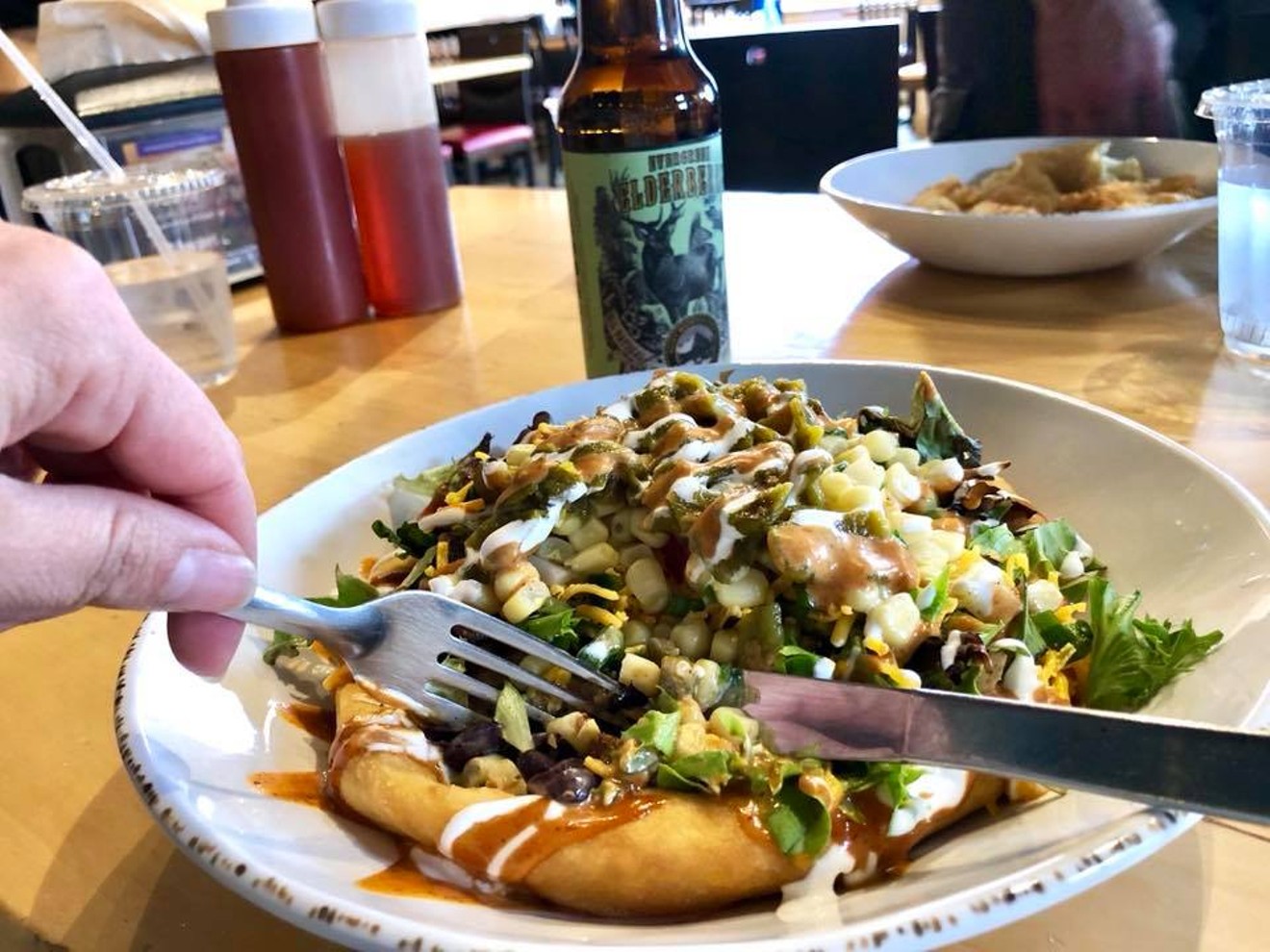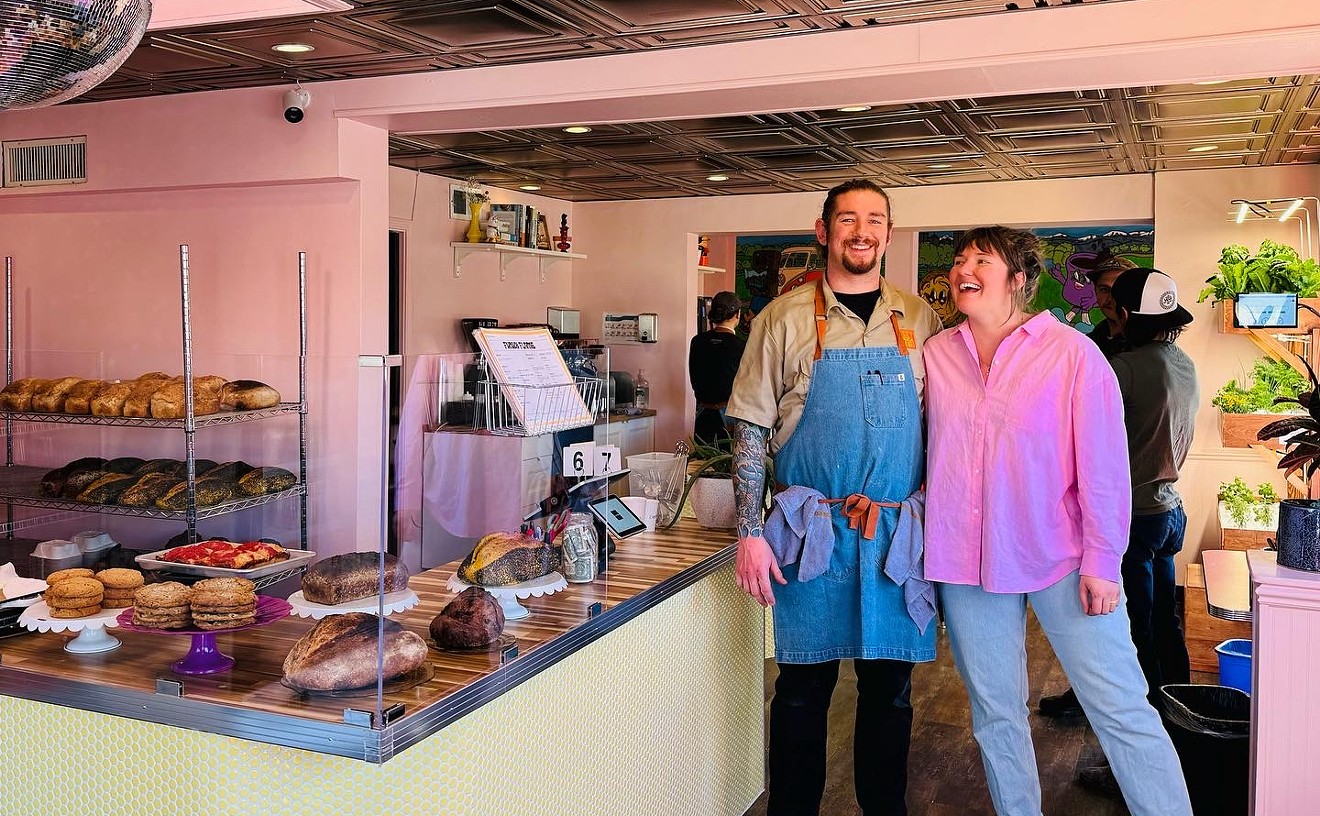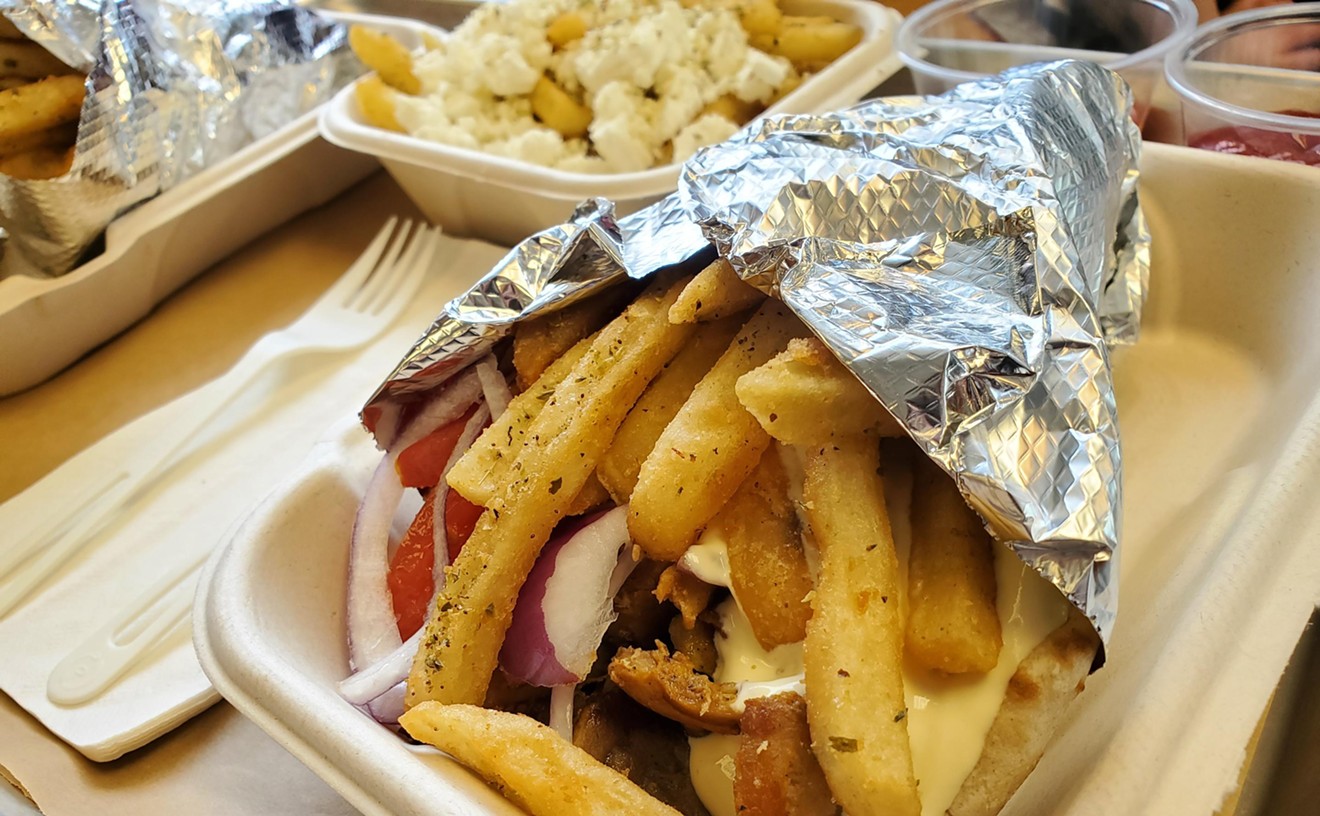Saturday, October 9, was a moment to do this, as Jacobs and Chandra hosted a virtual chef’s demo as part of "Back to the Source: Reclaiming Native American Food Traditions." The virtual event, hosted by the Flatirons Food Film Festival, centered on the film Gather, co-produced by the First Nations Development Institute, which tells of how some Indigenous Americans are reclaiming their spiritual and cultural identities by re-establishing a connection to their ancestral food systems.
“You have to learn how to pass down these traditions and these things that we do to the next generation, and if you don’t do this, your culture will be gone,” says Samuel Gensaw (of the Yurok Tribe) in the documentary as he teaches younger tribal members traditional methods of fishing for salmon and eel. "Our grandparents weren’t allowed to do this," he adds. "When you fished, you had to do it secretly. You had to cover your tracks” because of U.S government-imposed restrictions.
Much of the movie reflects on a history of American colonialism that did its best to eradicate Native culture and how Indigenous people survived. Still, that process of overcoming hasn’t come without costs, and it’s not finished. Many of the documentary’s subjects refer to health problems such as alcoholism, diabetes, suicide and homicide that continue to plague many Native American communities. You have to understand violence in all its forms, Nephi Craig (White Mountain Apache) says in the film.

Gather tells the story of how some Indigenous Americans are reclaiming their spiritual and cultural identities by re-establishing a connection to their ancestral food systems.
Gather
Craig, founder of the Native American Culinary Association, a network of Native cooks, chefs, scholars, farmers and community members devoted to the development and preservation of Native American foodways, explains that for him, it’s not solely about the way he interacts with the food. “The food is transforming us,” he says.
At Tocabe, Jacobs and Chandra have their own approach to re-establishing a connection between traditional foods, their suppliers and their customers. “We’re ingredient-driven. We’re here to try to promote and tell the stories of where a lot of these ingredients come from. We don’t know everything. We’re only scratching the surface of what we know,” Jacobs says. They hope that customers will leave with a desire to learn more about the history of their food, and not just Native food, but all the foods they eat, he continues.

Ben Jacobs and Matt Chandra of Tocabe source different varieties of corn, like this one, from Ramona's Farm. They built their October 9 chef's demo around Ramona Farms' stone-milled Pima corn.
Claire Duncombe
The Pima corn was sautéed and mixed with a traditional Osage corn soup stock and a butternut squash purée. The mixture, somewhat similar to risotto, formed the base for layers of braised bison, amaranth microgreens and hen of the woods mushrooms, known as wishi to the Cherokee. These mushrooms were sourced locally, but Jacobs and Chandra learned about them from Larry Shade (Cherokee) in Oklahoma, and Jacobs included the braised bison in tribute to the Osage Nation’s connection to buffalo. Squash and amaranth also have their origin in North America and have historically been a part of many Indigenous diets.
To finish, the dish was topped with fresh squash blossoms, and the result was an earthy, smoky bowl of flavor. Jacobs believes that’s the essence of their work: “blending things we know from our own community [and combining] multiple stories and identities on the plate.”
Jacobs goes on to ask, “How do we take traditional methods, ideas and bring them along and thrust them forward?” The answer, he says, is that it takes a lot of firsthand learning from the people and tribes they partner with, building a reciprocal relationship and then passing that knowledge along.
Try Native American ingredients in dishes at Tocabe locations at 3536 West 44th Avenue and 8181 East Arapahoe Road in Greenwood Village. Visit Tocabe's website for hours, menus and online ordering. The movie Gather is available on several streaming platforms.











